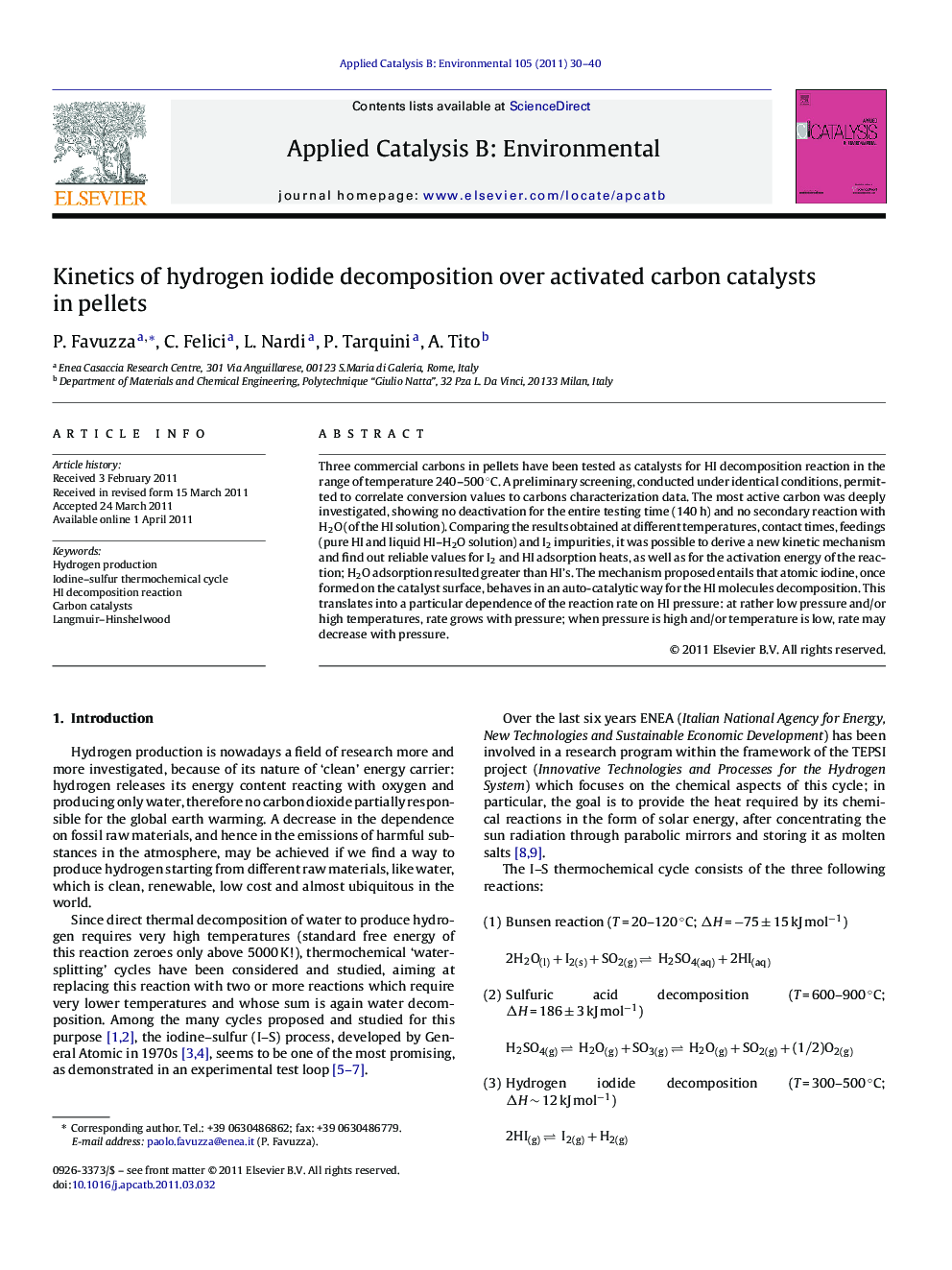| Article ID | Journal | Published Year | Pages | File Type |
|---|---|---|---|---|
| 46789 | Applied Catalysis B: Environmental | 2011 | 11 Pages |
Three commercial carbons in pellets have been tested as catalysts for HI decomposition reaction in the range of temperature 240–500 °C. A preliminary screening, conducted under identical conditions, permitted to correlate conversion values to carbons characterization data. The most active carbon was deeply investigated, showing no deactivation for the entire testing time (140 h) and no secondary reaction with H2O (of the HI solution). Comparing the results obtained at different temperatures, contact times, feedings (pure HI and liquid HI–H2O solution) and I2 impurities, it was possible to derive a new kinetic mechanism and find out reliable values for I2 and HI adsorption heats, as well as for the activation energy of the reaction; H2O adsorption resulted greater than HI's. The mechanism proposed entails that atomic iodine, once formed on the catalyst surface, behaves in an auto-catalytic way for the HI molecules decomposition. This translates into a particular dependence of the reaction rate on HI pressure: at rather low pressure and/or high temperatures, rate grows with pressure; when pressure is high and/or temperature is low, rate may decrease with pressure.
Graphical abstractFigure optionsDownload full-size imageDownload as PowerPoint slideHighlights► Three commercial carbons in pellets tested for HI decomposition reaction. ► Both pure HI and azeotropic HI solution used as reactant to compare the results. ► New kinetic mechanism and new equations derived for the reaction. ► Atomic iodine, once formed at the catalyst surface, behaves in an auto-catalytic way. ► Rate may increase with pressure but only at low pressure and high temperature.
